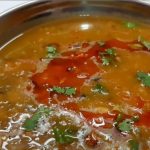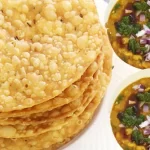Complete guide to preparing Sindhi Dhodho
Traditional Sindhi food invites with its amazing aroma, and among its many delectable options, the renowned “Sindhi Dhodho” stands out as a culinary marvel. This mouthwatering cuisine, which originates from Sindh, is a beautiful blend of flavors designed to satisfy the appetites of food lovers.
Today, we are going to experiment with this authentic Sindhi dish giving it a modern twist. Traditional dish is prepared either with rice flour or jowar flour and no curd is added to the dough.
Enjoy Sindhi Dhodho’s Exquisite Delights
Enjoy Sindhi Dhodho, a delicacy that captures the spirit of Sindh culinary tradition with its sumptuous flavors and alluring textures. This recipe tempts the palate and evokes memories of traditional Sindhi cuisine with its healthful combination of flours, vibrant greens, and aromatic spices. So on a culinary journey and savor the harmonious blend of flavors in this beloved classic dish.
Cooking Sindhi Dhodho is an art form that is enjoyable for the cook and the diners alike. Take an enthusiastic and inquisitive approach to the culinary journey, enjoying each stage and savoring the finished product when it arrives on your plate.
Cooking & Serving
Sindhi Dhodha can be prepared in many ways; everyone would have their own style. I am showing an estimate of approximate time that will take to complete this recipe.
| Total Time | 35 mins |
|---|---|
| Cutting and chopping | 10 mins |
| Preparing dough | 10 mins |
| Cooking | 15 mins |
| Plating and serving | 10 mins |
Key Ingredients of Sindhi Tahiri
- Sindhi Koki:
- 1 cup of jowar atta (sorghum flour)
- Besan, or 1/2 cup of chickpea flour
- Whole Wheat Flour, 1/2 cup (Atta)
- a half-cup of semolina (sooji)
- Rice flour, 1/4 cup
- Chopped half a cup of fresh methi leaves
- 14 cup finely chopped fresh coriander leaves
- Fresh Dill Leaves (Suwa Bhaji), 1/4 cup, chopped
- 2-3 Green Chilies, coarsely chopped 1/4 cup fresh spinach leaves
- 1 medium onion, diced finely
- Yoghurt, 1/4 cup
- Ginger-garlic paste, 1 tablespoon
- 1/4 cup cumin seeds
- Coriander powder, 1 teaspoon
- Red chili powder and half a teaspoon of turmeric powder
- One-half teaspoon of garam masala
- Asafoetida (Hing), 1/4 teaspoon
- Salt as desired
- as necessary Water Oil for cooking
Recipe: Step-by-Step Preparation
- Step 1: Preparing Dough
- Mix sorghum flour, chickpea flour, whole wheat flour, semolina, and rice flour in a large mixing bowl. For a perfect flour blend, thoroughly mix well.
- Now add fresh fenugreek leaves, coriander leaves, dill leaves, spinach leaves, green chilies, and chopped onion into the flour mixture. Add these colorful beautiful veggies and spices to the flour mixture to create a flavorful confluence.
- Whisk the yogurt in another bowl until it is smooth. Now add garam masala, asafoetida, salt, turmeric powder, red chili powder, cumin seeds, and ginger-garlic paste. A delicious marinade is produced by carefully mixing.
- Pour the spicy yogurt marinade into the greens and flour mixture gradually. To make a soft, flexible dough, combine the ingredients and knead them together, adding water as necessary. Give the dough around 15-20 minutes to rest, letting the flavors meld.
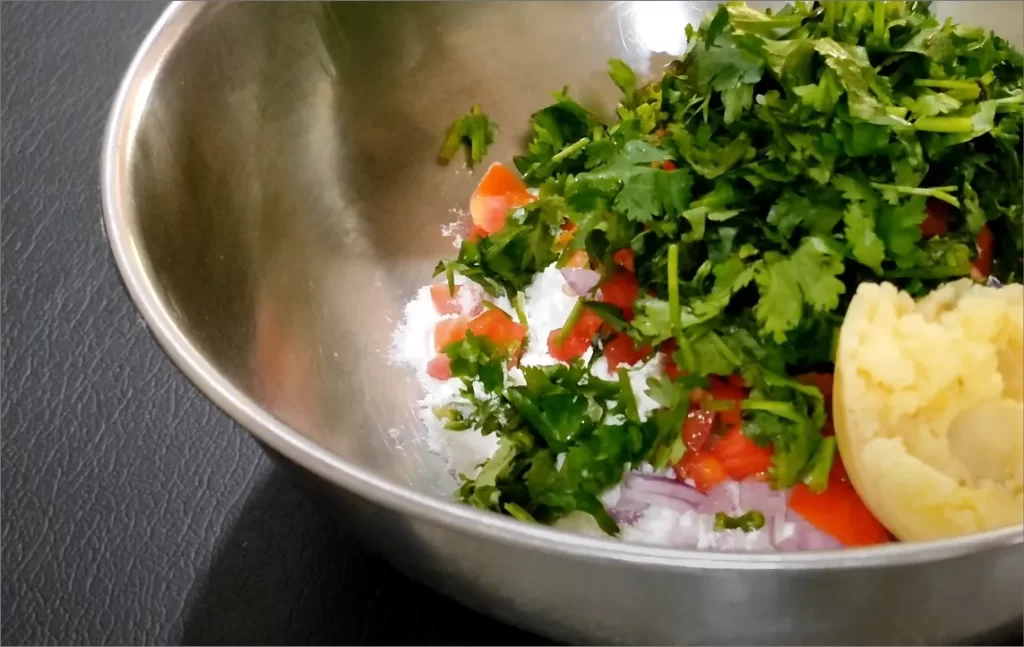
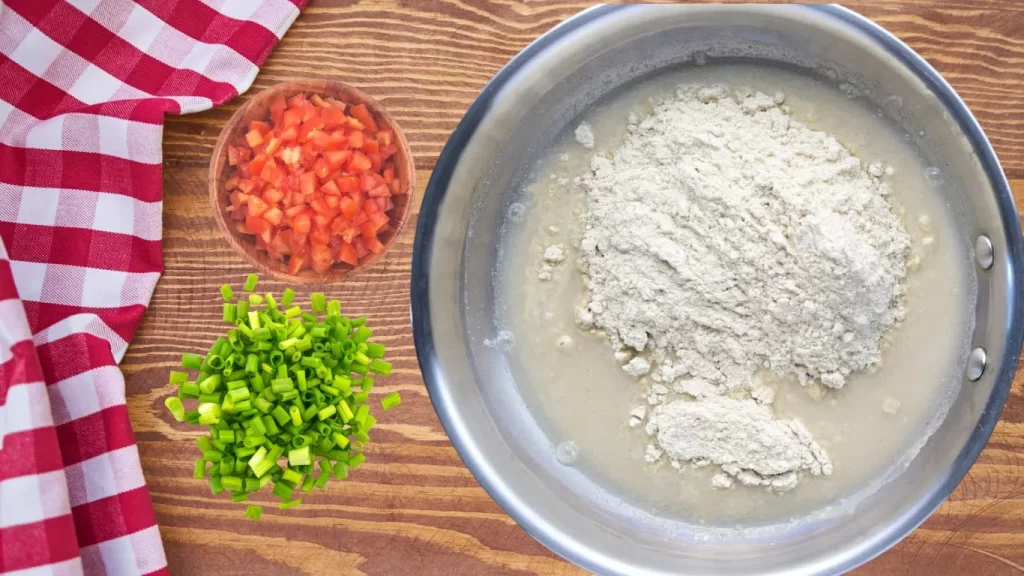
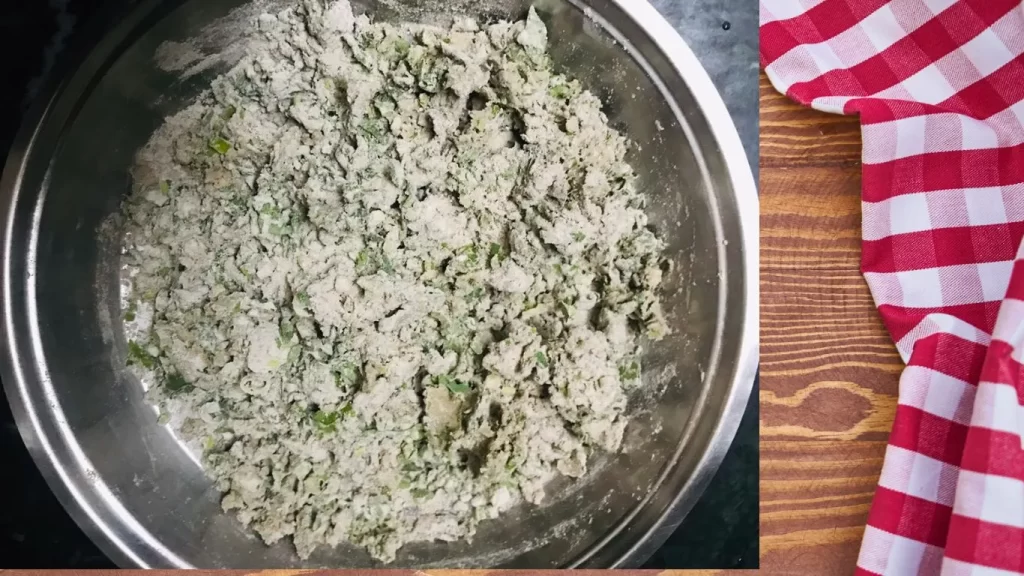
Also Read: Guide To Choosing Perfect Chimney And Hob Stove For Your Kitchen
- Step 2: Cooking
- Divide the dough into little lemon-sized balls after it has rested. Use a rolling pin to flatten and shape each ball into a disc. Aim for the ideal balance, making sure the disc is not too thick or thin.
- A griddle (tawa) is heated at medium heat after being lightly greased with oil. Place the rolled disc on the hot griddle and cook it, adding oil as needed, until both sides are golden brown. The remaining dough balls should then be treated similarly.
- When the delicious Sindhi Dhodho is finished cooking, serve it hot with yogurt, pickles, or any other chutney of your choice.
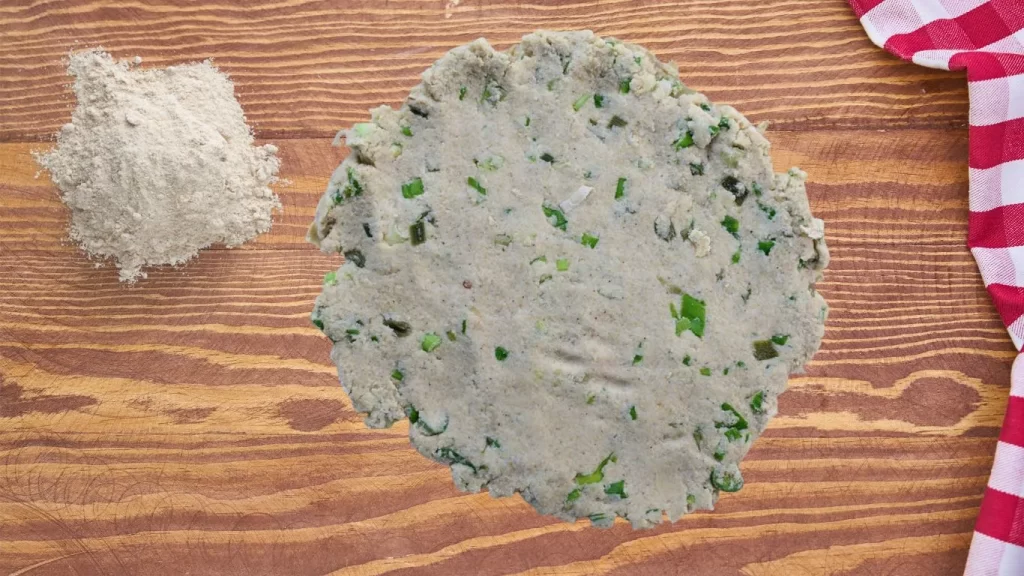
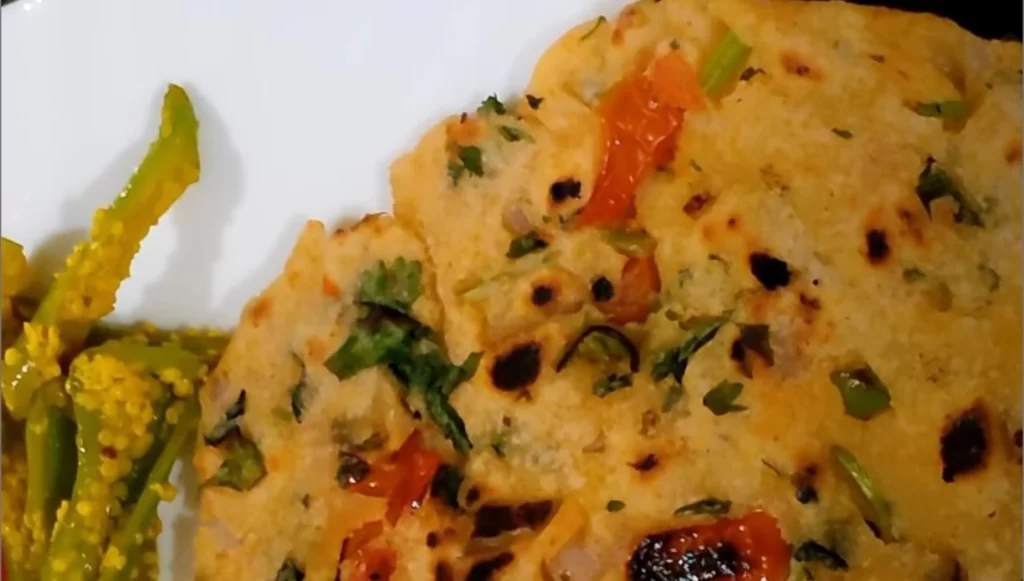
The Perfect Preparation: Tips
A well-known traditional meal called Sindhi Dhodho delivers a delicious blend of tastes and textures that tempts the palate. Here are some helpful tips for mastering the technique of creating the ideal Sindhi Dhodho in order to ensure your culinary endeavor is a resounding success:
- Balance of the flour blend: In order to make a soft and malleable dough, it is essential to achieve the proper flour balance. Combine the right amounts of sorghum flour (jowar atta), chickpea flour (besan), whole wheat flour (atta), semolina (sooji), and rice flour. The dish’s taste and texture are enhanced by this combination, giving it a well-balanced flavor profile.
- Take in the lush greens: The main ingredients in this dish—fresh spinach leaves, fenugreek leaves, coriander leaves, dill leaves, and suwa bhaji—add a burst of freshness and nutritional value. Make sure to finely chop them so the dough will absorb their bright flavor.
- Seasonings and Spices: The symphony of spices is what gives Sindhi Dhodho its beauty. Mix yogurt with salt, asafoetida (hing), cumin seeds, coriander powder, turmeric powder, red chili powder, and ginger-garlic paste. To make a flavorful marinade that improves the flavor of the food, adjust the spice amounts to your liking.
- Rest Period: After kneading the dough, let it sit for at least 15-20 minutes. This resting time helps the flavors to converge, making the Dhodho more delectable and delicate.
- Rolling Technique: When forming the dough into flat discs, strive for the ideal thickness. The proper disc thickness provides consistent cooking and a wonderful mouthfeel; it should be neither too thick nor too thin.
- Cooking Technique: Cook the Dhodho on a griddle (tawa) over medium heat to achieve the distinctive golden-brown hue and texture. Before placing the rolled discs on the griddle for cooking, lightly coat it with oil. The dish’s richness is enhanced by adding oil as needed throughout the cooking process.
- Pairing and Serving: A variety of delectable accompaniments can enhance your Sindhi Dhodho experience. The meal’s many flavors and textures are complemented by raita trios, pickles, chutneys, papad, and fryums. For a comprehensive culinary experience, pair it with the traditional Sindhi Kadhi.
Combinations and Pairings:
Delicious Sindhi Dhodho demands an equally exquisite accompaniment to go along with its rich flavor thanks to its harmonious combination of flavors and aromatic spices. Explore these delicious accouterments that go nicely with this traditional Sindhi delicacy to elevate your eating experience.
The culinary adventure of meal pairing improves the whole eating experience. With Sindhi Dhodho as the focal point of your meal, these delicious sides offer a plethora of options and tantalize your taste buds with each bite. So enjoy the culinary adventure and discover the symphony of flavors that emerge when Sindhi Dhodho meets its ideal mates.
- Cucumber Mint Raita from the Raita Trio This raita is a lovely combination of yogurt, finely sliced cucumber, fresh mint leaves, and black salt that is cool and refreshing. The earthy flavors of Sindhi Dhodho are wonderfully balanced by its tart undertones.
- Boondi Raita: Enjoy the crunchy boondi (fried chickpea flour balls) texture suspended in smooth yogurt and spiced with chaat masala and roasted cumin powder. The Dhodho’s softness contrasts beautifully with the boondi’s crispness.
- Pomegranate Raita: This vivid raita, studded with luscious pomegranate arils, adds a blast of color and flavor. A delicious symphony on the palate is produced when the fruit’s sweetness is combined with the seasoned Dhodho.
- Green Chutney: This condiment brings life to the Dhodho experience with its energizing flavors. It is prepared from fresh coriander, mint, green chilies, and lime juice.
- Mango and Lemon Pickle: To balance the mildness of the Dhodho, the acidic and spicy mango pickle adds a delicious contrast of tantalizing flavors.
- Crispy potato fryums, a favorite side dish, add a satisfying crunch to the Dhodho experience.
- Chaas (Buttermilk): A calming glass of chaas balances the spice of the dhodho and offers a refreshing break.
- Masala Chai: Enjoy a cup of masala chai for a heartfelt pairing. The warm, aromatic tones of this tea blend beautifully with the spices of the Dhodho.
You can always experiment with several pairings to identify your own favorite. Whether you prefer a tangy pickle, cooling yogurt, or a flavorful curry, Sindhi Koki offers versatility and can be enjoyed with a range of complementary dishes.
Nutritional Benefits of Sindhi Koki
A tasty and fragrant flatbread Sindhi Koki gives not only a lovely taste but also some health advantages. Here is a rough breakdown of the nutritional elements of Sindhi Koki, while the precise nutritional value may vary depending on the precise ingredients used and the serving size:
- Due to the use of wheat flour and frying with oil or ghee, Sindhi Koki has a lot of calories. A serving of Sindhi Koki (about one piece) might add 150–200 calories to your diet on average.
- Wheat flour serves as the main source of carbohydrates in Sindhi Koki. It offers dietary fiber and energy to the body. The amount of carbs in one serving may range from 20 to 30 grams.
- Protein: The main component of Sindhi Koki, wheat flour, has a fair amount of protein. Protein is necessary for many body processes, such as tissue growth and repair. Protein content in a serving of Sindhi Koki may range from 3 to 5 grams.
- Fats: Sindhi Koki’s fat content is increased by the use of ghee or oil during the cooking process. Although fat is a concentrated source of energy, it’s still crucial to eat it in moderation. A dish of Sindhi Koki could include 5-8 grams of fat in it.
- Fiber: Since wheat flour is used to make Sindhi Koki, dietary fiber is included. Fiber helps overall digestive health, aids in digestion, and encourages fullness. One dish of Sindhi Koki contains between one and two grams of fiber.
- Minerals and vitamins: Sindhi Koki doesn’t have a lot of minerals or vitamins in it. However, it can provide trace amounts of some elements found in wheat flour, including magnesium, thiamine, and B vitamins.
It’s vital to keep in mind that the nutritional information shown above is approximations and may change depending on the Koki’s size, the precise ingredients used, and the cooking technique. Consult a nutritionist or healthcare provider for specialized assistance if you have certain dietary concerns or are adhering to a particular diet plan.
FAQs (Frequently Asked Questions)
- What is Sindhi Dhodho?
- Sindhi Dhodho is a traditional dish from the Sindhi origin, renowned for its distinctive blend of flours and an assortment of fresh greens. It is a savory, flavorful flatbread prepared with a combination of sorghum flour (jowar atta), chickpea flour (besan), whole wheat flour (atta), semolina (sooji), and rice flour, coupled with finely chopped fenugreek leaves (methi), coriander leaves, dill leaves (suwa bhaji), and spinach leaves.
- How is Sindhi Dhodho different from other flatbreads?
- Sindhi Dhodho stands apart from other flatbreads due to its unique blend of flours and an array of vibrant greens, which contribute to its rich taste and texture. The use of sorghum flour and a combination of other flours sets it apart from conventional wheat-based flatbreads like roti or chapati.
- How do I ensure the dough is soft and pliable?
- To achieve a soft and pliable dough, ensure that you knead it well and allow it to rest for at least 15-20 minutes before rolling the discs. The resting period helps the flours absorb the moisture, resulting in a more manageable dough.
- Can I prepare Sindhi Dhodho in advance?
- While it is best enjoyed fresh, you can prepare the dough in advance and store it in the refrigerator. Make sure to cover it tightly with cling film or a damp cloth to prevent it from drying out. When ready to cook, allow the dough to come to room temperature before rolling and cooking the discs.
- How can I store leftover Sindhi Dhodho?
- If you have any leftover Dhodho, store it in an airtight container in the refrigerator. To reheat, you can lightly toast it on a griddle or in a microwave, ensuring it retains its softness and flavor.
- In an airtight container, you can freeze leftover Sindhi Koki. The Koki should be defrosted before being heated on a griddle or tawa until warm and crispy.
What are you waiting for, put on your apron, gather your ingredients, and go on a culinary adventure to enjoy Sindhi Dhodho flavors. Enjoy!




